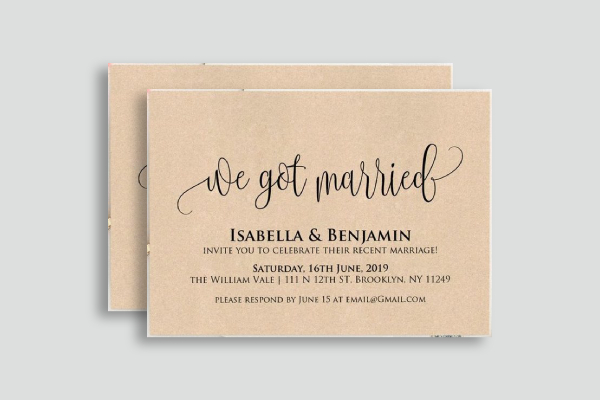Crafting Elegance: Navigating the Dos and Don’ts of Addressing Wedding Invitations

As you embark on the journey of wedding planning, addressing the invitations is a crucial step that sets the tone for the entire celebration. Properly addressing wedding invitations is not only a matter of etiquette but also an opportunity to convey the significance of the event. In this article, we’ll delve into the dos and don’ts of addressing wedding invitations, providing guidance on creating elegant and thoughtful invitations that reflect the joyous occasion.
Dos:
1. Use Formal Titles:
When addressing wedding invitations, opt for formal titles such as Mr., Mrs., Ms., and Dr. This adds an air of sophistication and respect to your invitations. If someone holds a professional or honorary title, include it in the address to acknowledge their status.
2. Include Full Names:
Be sure to include the full names of both the recipient and their guest, if applicable. This not only ensures clarity but also adds a personal touch to the invitation. Addressing envelopes with full names showcases attention to detail and reflects the significance of the occasion.
3. Prioritize the Inner Envelope:
For traditional wedding invitations, especially those with multiple invitation elements, the inner envelope is where you can add a touch of personalization. Include the first names of the individuals or the family you are inviting, making it clear who is invited to share in the celebration.
4. Verify Guest Titles:
When in doubt about a guest’s title or preferred form of address, it’s perfectly acceptable to ask. Confirming these details ensures that your invitations are not only accurate but also considerate of individual preferences.
5. Use the Correct Honorifics:
When addressing married couples, use the appropriate honorifics. For instance, “Mr. and Mrs.” followed by the husband’s full name. In the case of a married couple with different last names, list both individuals’ full names, such as “Ms. Jane Smith and Mr. John Doe.”
6. Consider Children’s Names:
When children are invited, include their names on the inner envelope beneath their parents’ names. This signals that the children are also welcome at the celebration. For example, “Mr. and Mrs. John Doe, Miss Emily, and Master James.”
7. Mind Your Handwriting:
Take the time to write or print the addresses in a clear and legible manner. A carefully addressed envelope adds a personal and elegant touch to your invitations. If your handwriting isn’t your strong suit, consider using address labels or hiring a professional calligrapher.
Don’ts:
1. Avoid Abbreviations:
Steer clear of using abbreviations in the addresses, especially for titles. Write out titles and street names in full to maintain the formality and grace of your wedding invitations.
2. Skip Titles for Formal Events:
In formal settings like weddings, omitting titles can be perceived as less formal and, in some cases, disrespectful. While casual events may allow for a more relaxed approach, formal events benefit from the inclusion of proper titles.
3. Neglect the Inner Envelope:
The inner envelope serves as a secondary layer of formality and allows for additional personalization. Neglecting the inner envelope can result in confusion regarding the specific individuals invited, leading to potential misunderstandings.
4. Overlook Spelling and Grammar:
Proper spelling and grammar are crucial when addressing wedding invitations. Double-check names, addresses, and titles to avoid any embarrassing errors. A well-crafted invitation reflects attention to detail and respect for your guests.
5. Assume Marital Status:
When addressing individuals whose marital status is unclear, it’s better to ask for clarification than to make assumptions. For instance, if unsure whether a woman is married, use “Ms.” instead of “Mrs.” to err on the side of formality and correctness.
6. Use “and Guest” on the Outer Envelope:
While it’s common to use “and Guest” on the inner envelope to indicate the option for a guest, avoid doing so on the outer envelope. This maintains the formality of the outer envelope and is more aesthetically pleasing.
7. Include Registry Information:
Your wedding invitation is not the place to include registry information. Sharing registry details on the invitation is considered tacky and can be perceived as a solicitation for gifts. Instead, rely on word of mouth or include registry information on your wedding website.
Conclusion:
Addressing wedding invitations is a delicate balance between formality, respect, and personalization. Following these dos and don’ts will help you navigate this aspect of wedding planning with elegance and consideration. Remember, each addressed envelope is an invitation to share in the joyous celebration of love, and the way you address them sets the stage for the memorable event that awaits.





